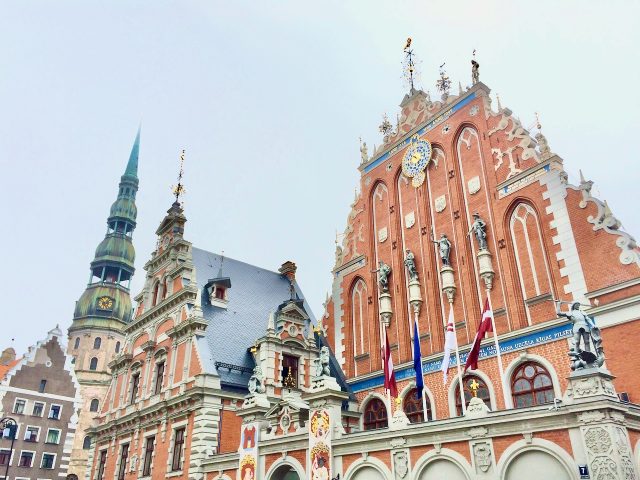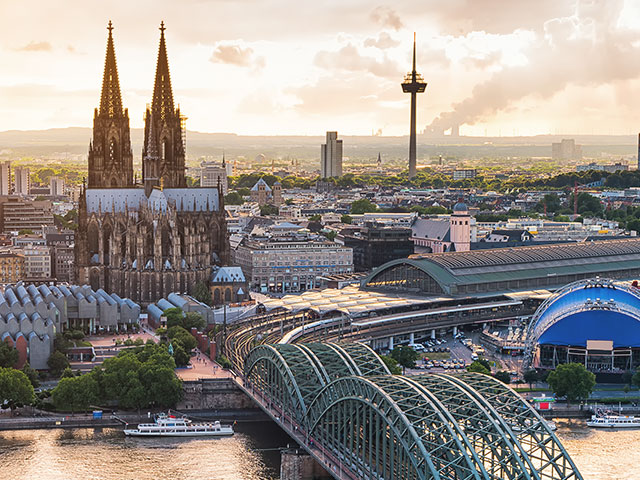How do I arrive to A Coruña?
- Plane: there are many national and international flights (from Portugal and the UK) to A Coruña Airport. To go from the airport to the city, there are buses (number 4051; each 30 minutes; 1.50€) and taxis. It's 9 km south from the center of the city.
- Train: there are at least 7 daily train routes from Santiago to Madrid (aprox. 6 hours) and vice versa. The routes in Galicia link Coruña with Betanzos (aprox. 40 minutes), Ferrol (aprox. 1 hour 15 minutes), Lugo (aprox. 1 hour 45 minutes) and Monforte de Lemos (aprox. 2 hours 15 minutes). Coruña also has connections every hour with Santiago de Compostela (aprox. 30 minutes), Pontevedra (aprox. 1 hour 10 minutes) and Vigo (aprox. 1 hour 20 minutes). There are also available trains every hour to Ourense (aprox. 1 hour 15 minutes).
- Bus: Coruña has frequent connections with most of the cities of Galicia via Coruña Bus Station. It also has connections with other Spanish cities like Madrid or Barcelona.
- Car: if you rented a car, it's a 20 minutes ride from Betanzos, 40 minutes from Ferrol, one hour away from Santiago de Compostela from Lugo, a 1 hour 10 minutes journey from Camariñas, 1 hour 20 minutes from Ortigueira, Fisterra and Mondoñedo, 1 hour 30 minutes from Pontevedra and 2 hours from Ourense. It can also be reached going from Portugal, it's 2 hours away from Viana do Castelo, 2 hours 10 minutes from Braga and 2.5 hours from Porto.
History
A Coruña's top 5
- Tower of Hercules.
- Castle of St. Antón.
- Coruña Fine Arts Museum.
- Domus, Museum of Mankind.
- National Museum of Science and Technology at A Coruña.
What can I visit in A Coruña?
| Castle of St. Antón |
- Castle of St. Antón: 16th century fortress built in Phillip II of Spain times to protect A Coruña from piracy. With time it has also been used as prission and nowadays inside it there's the A Coruña Archaeological and History Museum (10-21 Tue-Sat and 10-15 Sun from Jul to Aug; 10-19:30 Tue-Sat and 10-14:30 Sun from Sep to Jun; 2€/ 1€ adults/ reduced), a museum which an interesting view of the history of Galicia, focused in pre-history and ancient history. Some of its most interesting pieces are Leiro helmet, torques (Celtic necklace) of Xanceda or Cícere precious metalwork.
- St. Carlos Gardens (9-20): gardens placed where A Coruña old fortress used to be. Here it's buried sir John Moore, English general who died defending the city from the French in the Peninsular War. It has a viewpoint of Coruña's port too.
- Luis Seoane Foundation (11-15 and 17-21 Tue-Sun; free): art center that exhibits works by Luis Seoane (20th century lithographer and artist who took part in the revival of Galician culture) and other artists.
John Moore's tomb at St. Carlos Gardens - Military History Museum (10-14 and 16-19 Mon-Sat, 10-14 Sun; free): museums with a collection of more than 1,600 exhibits that show the military history of the region from the 18th to the 20th century.
- Emilia Pardo Bazán House-Museum (9-14 Mon-Fri from Sep to Jun from Jul to Aug; 9-14:45 and 16:30-19:45 Mon-Fri from Sep to Jun; free): 19th century house where one of the first Spanish female writters lived, Emilia Pardo Bazán (she is the main Naturalism style writer in Spain). The house its preserved almost the way it was back then. Currently it's the home of the Royal Galician Academy, organisation which regulates Galician language.
- Santiago Church (11-13:30 and 18:30-19:30 Mon-Fri): 12th century Romansque style church (oldest in A Coruña) with a beautiful façade.
A Coruña City Hall: 20th century ecclectic palace built by P. Mariño, inspited by Neoclassic art and Louvre.A Coruña City Hall - St. María do Campo Collegiate Church (11-13 Mon-Fri): 14th century Romanesque church with wonderful works of art inside. Nowadays it also hosts A Coruña Sacred Art Museum (9-14 Tue-Fri; 10-13 Sat; free), museum which hosts many of the religious are pieces that the collegiate church has been keeping since the 16th century.
- María Pita House-Museum (11-13:30 and 18-20 Tue-Sat; 12-14 Sun; free): house where Coruña's heroine lived. On its 3 floors there are expositions about the house and María Pita's life, the Kingdom of Galicia in the 16-17th centuries, Coruña's history and the relationships between Spain and England.
Estudio para boda en Galicia
by Álvarez de Sotomayor - Casares Quiroga House-Museum (11-13:30 and 18-20 Tue-Sat; 12-14 Sun; free): house where the most representative Galician politician of the Second Spanish Republic lived. It also shows the history of the Spanish republicanism in Coruña and Galicia.
- Coruña Fine Arts Museum (10-20 Tue-Sat; 10-14 Sun; free): surprising museum with Spanish and European paintings from the 16th to the 20th century. Some of them are by J. Sorolla, Rubens, Tintoretto, P. Picasso, F. Goya or F. Álvarez de Sotomayor. It has temporary expositions too.
- Before arriving the Tower of Hercules there's a big park with expositions, modern sculptures likes Menhires pola Paz and paths over the cliffs.
- Tower of Hercules (10-21 from Jun to Sep; 10-18 from Oct to May; 3€/ 1.50€/ free adults/ retiree and students/ disabled people and on Mon): world's only working Roman lighthouse, symbol of A Coruña and World Heritage Site since 2009. According to legends it was one of the 12 labours of Hercules, but it was actually built by the Romans around 1st century AD. In the 18th century, in king Charles III of Spain, it was restored (it was about to collapse), covering it with an structure that protected the Roman one, being able to keep being used.
Tower of Hercules - Aquarium Finisterrae (10-20 from Jul to Aug; 10-19 from Sep to Jun; 10€/ 4€/ free adults/ retiree and students/ kids under 4): spectacular aquarium by the sea, focused on sealife from Galicia and the Atlantic ocean, that will delight kids and adults. Public favourite rooms are seal's and Nautilus ones, this latter because is surrounded by sharks and more than 50 species of fish.
- Domus, Museum of Mankind (10-20 from Jul to Aug; 10-19 from Sep to Jun; 2€/ 1€/ free adults/ retiree and students/ kids): extremely interactive museum that allows to check human's limits, learn about our specie and our evolution. This museum is particulary recommended for families who are travelling with their kids. There's a card called Bono Tres Casas (12€), that allows you to visit Domus, Aquarium and the Science Museum.
Lapas Beach or praia das Lapas - A Coruña has many urban beaches and in general they are all very good ones. Riazor Beach is the most popular and crowded one but there are other with less people like Lapas Beach (awarded with blue flag), Amorosas Beach or Oza Beach.
- Picasso House-Museum (11-13:30 and 18-20 Tue-Sat; 12-14 Sun; free): house where Pablo Picasso lived between the ages of 10 and 14. It's almost exactly the way it was left and shows some of young Picasso paintings (being a proof that Picasso's talent was already being developed at that age).
- A Coruña Science Museum and Planetarium (10-20 from Jul to Aug; 10-19 from Sep to Jun; 2€): museum especialised on physics with interactive expositions and another with recent scientific updates and discoveries. In its center there's a huge Foucault pendulum and there are also temporary expositions.
- National Museum of Science and Technology at A Coruña (11-20 Tue-Sat and 11-15 Sun from Jun to Sep; 11-17 Tue-Sat and 11-15 Sun from Oct to May; free): museum with more than 1,500 objects about the technology and scientific history of Spain. Some of the most outstanding pieces are a Boeing B-747 and a room with an invention for each year of the 20th century.
- Outside the Old Town and by the coast there's Monte St. Pedro, a mount from where getting great views of A Coruña and its bay, specially from the viewpoint Atlantic Dome. It can be reached walking or in a lift (each way 3€/ 1.50€ adults/ retiree).
- Castro de Elviña (guided tours 12 Sat-Sun from Jul to Sep; guided tours12 Sun from Oct to Jun; free): ruined site of Celtic culture that was inhabited till the foundation of Brigantium, reaching a population on its peak of 2,000 people.
| View of Monte St. Pedro |
| Pasatempo Park |
What can I do in A Coruña?
 |
| Riazor Stadium, home of Deportivo de La Coruña |
A Coruña is also home of the brewery of one of the most popular beers in Spain, Estrella Galicia. At Estrella Galicia World Museum (11-19 Tue-Thu; 11-20 Fri-Sun; 20€/ 15€/ 15€ guided tour/ self-guided visit/ brewer workshop) you can learn more about this product, its history and also try it.
Where can I eat in A Coruña?
The most popular streets to eat in A Coruña are rúa Olmos, rúa Galera and rúa da Franja, very close to praza de María Pita. The recomendations for low budgets are the tapas bars La Bombilla () or El Tequeño (), octopus bar A Pulpeira de Melide (Praza de España 16), Rey del Jamón (), A Nova Lanchiña (Rúa Capitán Juan Varela 30) or A Portela (Rúa da Franja 63). For medium budgets these are some of the most importants: the Galician restaurant O Bebedeiro (), El de Alberto (), or the restaurant Comer y Picar (Rúa Comandante Fontanes 1). A popular cafe brand placed here in Galicia is Café Siboney.There are also places where going out and drink, especially around rúa Orzán.








 12:54
12:54
 Banknotemaniac
Banknotemaniac
 Posted in:
Posted in: